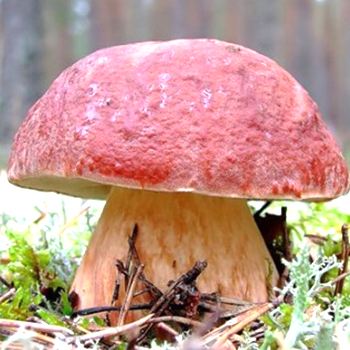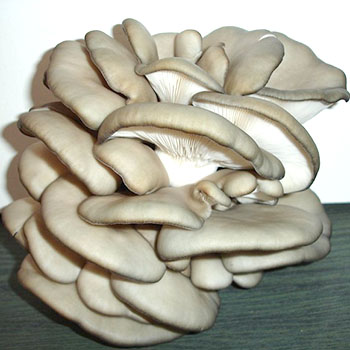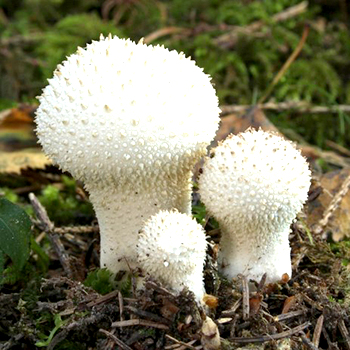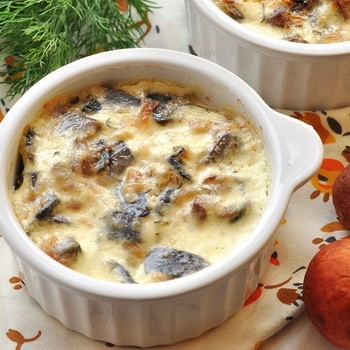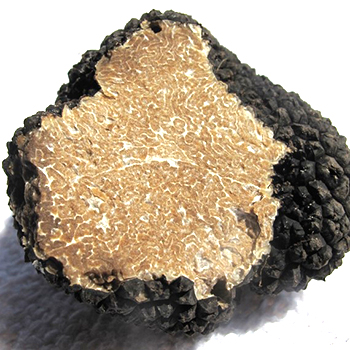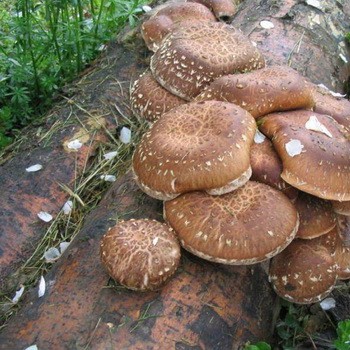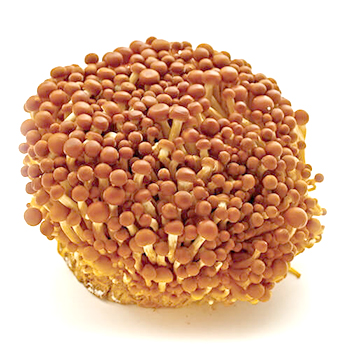DIY forest mushroom cultivation in a summer cottage
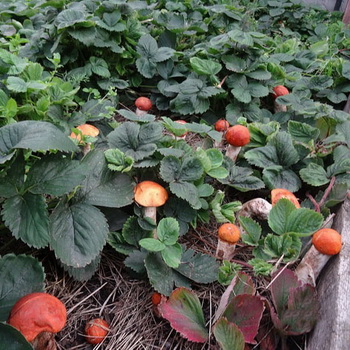
Content
How to plant mushrooms in a summer cottage: breeding oily
Sometimes it happens that fruitful mushroom places - copses, edges, roadside plantings, inconvenience overgrown with forest trees - suddenly fall into the zone of active economic use. If you know that extinction threatens such a mushroom place, then a good idea is to transfer the tree with mycorrhiza to your garden. So you can plant many mushrooms on the site, the main thing is to choose a suitable place in the garden for them.
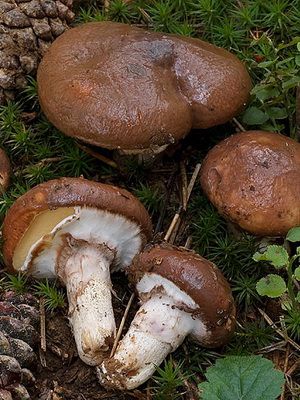
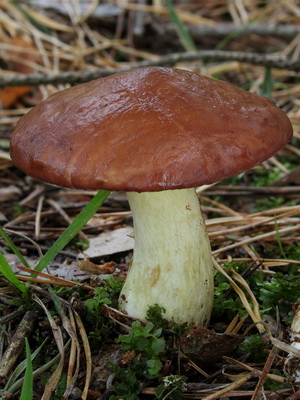
In the European part of Russia, two types of oil are most common: real butterdish (Suillus luteus) and grainy oiler (Suillus granulatus) The advantage of a oily granular mushroom for growing on the site is that it gives high yields under the pine from May to late autumn. Oil can grow under young pine trees. They bear fruit in the grass, without violating the integrity of the lawn. When growing these mushrooms in a summer cottage, the mycelium does not suffer from mowing the lawn.
One of the most reliable ways of cultivating mycorrhizal fungi in the garden is to transplant a small tree under which the desired mushroom grows. When mushrooms are cultivated on the site, the crop may appear in a few years. Granular oiler is the best suited for this method. This butterdish bears fruit from May to the end of September and gives a great harvest. He prefers calcareous soil, which was chosen for planting. The butterdish grows not only in the forest, but also at the edge of the forest in the zone of self-sowing of pines, where grass and few other mushrooms grow that could compete with it. Transplanted pine trees grow quickly in the garden.
Before you grow such mushrooms on the site, in the area of self-sowing of pines on a former arable field, you need to mark ahead of time the trees with abundant fruiting of a oily granular. During the experimental cultivation, the pines were dug up practically without an earthen coma. The first pine tree, a little less than a meter in size, was planted in a free sunny place among the lawn grass and berry bushes in the summer of 2000. The lawn was watered in dry weather in a hose. The first mushrooms in the summer cottage appeared in the summer of 2004, but the yield was small. In 2005, the butterdish produced several times throughout the summer. In the 2006 season, the first wave of fruiting of mushrooms in the household plot was recorded on the holidays of May 9, the second - on May 30, and in the future butterflies appeared regularly with a frequency of three weeks until the end of September.
When cultivating mushrooms in a summer cottage, the care of the plantation of oils is to regularly water the lawn under the pines.This place must be fenced off with a low plastic mesh to protect it from trampling. Lubes especially like to appear near bushes, fence posts and other obstacles to the development of mycelium.
In the period from 2007 to 2010, when mushrooms were grown on the garden plot, pines with a grainy oiler and a real oiler were transplanted. Granular butterflies grow every year, and single instances of the butterdish present have appeared only a few times. This may be due to the calcareous nature of the soil on the site.
How to breed mushrooms mushrooms in a summer garden
In pre-revolutionary Russia, it was fashionable to make paths in the estate with Christmas trees dug in the fruiting areas of camelina in the forest. Why don't we bring this tradition back? Transferring Christmas trees with mycorrhiza camelina spruce (Lactarius deterrimus) will provide annual fruiting of this forest mushroom on the site and decorate the garden.
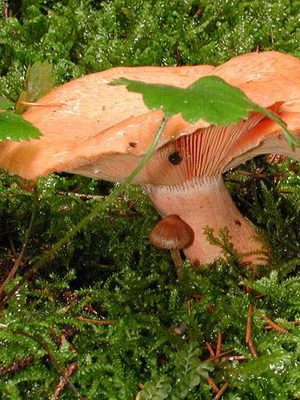
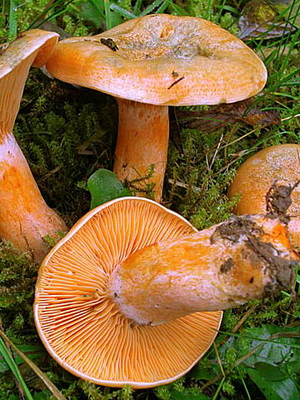
Fir saffron - a very beautiful mushroom with a clear pattern on the hat in the form of rings of bright carrot color with a greenish tint. Even if mushrooms grow in a nearby forest, the reproduction of these mushrooms on a site with their own hands makes sense, because they can be harvested in the morning, as soon as they appeared. This is important because spruce mushrooms grow in the summer and are quickly damaged by insects.
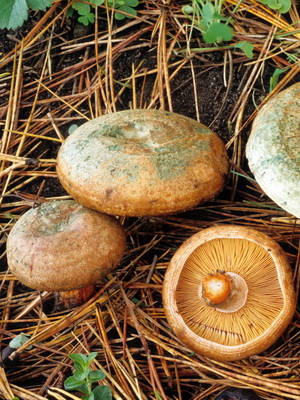

With pine forms mycorrhiza delicious saffron milk cap (Lactarius deliciosus) Pine camelina is larger than spruce and less brightly colored. Fruits in late autumn under pine trees on limestone soil. Therefore, in some years, in cold weather, you can pick up a full basket of non-wormy mushrooms.
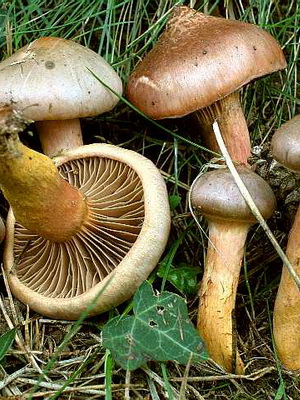
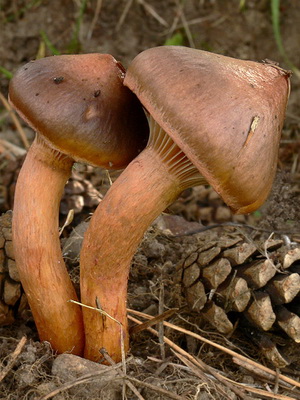
At the same time, edible fungus Mokruha purple (Chroogomphus rutilus) grows there, which also loves calcareous soil and forms mycorrhiza with pine. It is a large, fox-shaped mushroom of yellow-brown color with purplish-purple plates. Some mushroom pickers like the specific, sweet taste of mokruha.
Gingerbread delicious is harvested in large quantities in September in young pine groves. Where uncultivated arable fields are surrounded by a pine forest, dense groves form. In such groves pine mushrooms grow. On calcareous soils under the pines, the oil is first harvested, and then there are wet mushrooms and mushrooms.
How to grow mushrooms in the garden plot mushrooms? The easiest way is a transplant from a pine grove of very young pines. Pines take root well, even if they are dug up without a clod of earth. Near the fruiting site of camelina, all pines have its mycorrhiza on the roots. Mushrooms can appear in a few years, even earlier it is oily. But, if the oiler can grow plentifully and bear fruit on the lawn under a separate pine tree planted to decorate the garden, then camelina prefers a pine grove and higher uncowed grass.
When growing mushrooms in a personal plot after transplanting 2-3-year-old pines with mycorrhiza saffron mushrooms from the forest, mushrooms appeared the next year. You can’t collect a plentiful harvest, but our saffron mushrooms serve as a signal for their collection in the forest.
The sweet, slightly tart orange milky juice of saffron milk does not bite. Redheads are completely non-toxic and suitable for use in any form.
Growing chanterelle mushrooms in the garden
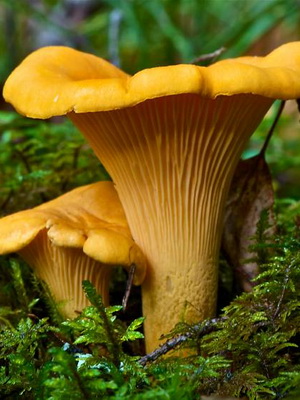
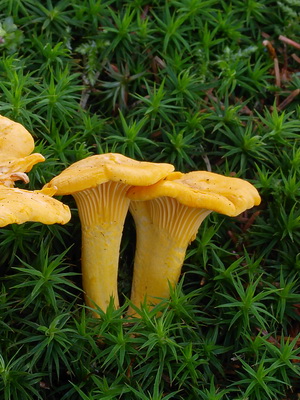
From other mycorrhizal fungi were sown chanterelles (Cantharellus cibarius) and dry mushrooms. Chanterelles often appear on garden plots spontaneously when there are trees there. In Europe, and in Russia, many prefer chanterelles to other mushrooms. There are reasons for that. In mushroom time, chanterelles grow constantly and everywhere, even in the dry year. They are bright yellow - they are easy to find and can be collected quite a lot. Chanterelles are very well preserved after collection, they do not crumble and do not break in a backpack. This is one of the reasons that their collection and purchase has been established.
How to plant chanterelle mushrooms on the plot? To do this, transplant into the garden a tree near which Cantharellus cibarius were seen in the forest.
Even those who are not particularly versed in mushrooms know that chanterelles are not poisonous. Another reason is the legend about their healing properties and that they do not accumulate harmful substances.But this is only a legend, since chanterelles differ little from other edible mycorrhizal fungi in terms of health benefits or harm. As for their taste, their taste and smell, albeit mushroom, are weak. They are good in the pan, because fry little, but it is better to cook them together with other, more fragrant mushrooms.
How to propagate mushrooms in the garden: growing mushrooms
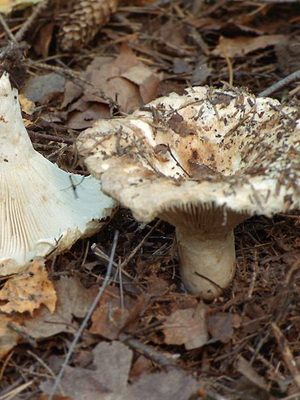
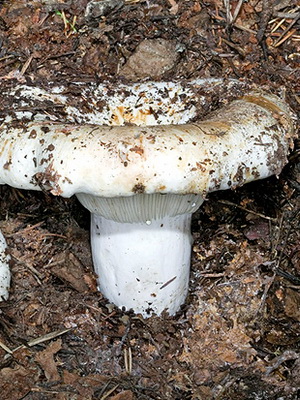
Dry lump, cracker, or white preload (Russula delica) almost no bitterness, no milky juice. The pulp is white with a sweetish, slightly spicy taste. Not everyone likes his bitterness, but after salting or boiling it disappears. It is suitable for any dishes, but in saline it is not inferior to a real loaf. Many in the suburbs consider him to be a real cargo, which is not true.
So that the fragile plates of the mushroom do not crumble before cooking, it must be blanched. It is sometimes found in garden plots with birch. Its big disadvantage is the strong worminess of the mushrooms. Few people know that dry lumps give a powerful wave of fruiting in late autumn, at which time even very large specimens remain non-wormy.
If you plant these mushrooms on a plot in the forest and create conditions for its fruiting, in the fall you can collect enough lumps for pickling. When preparing the seed, you can find out that dry spores, like chanterelle spores, do not settle well in solution. You can use a suspension of spores along with pulp.
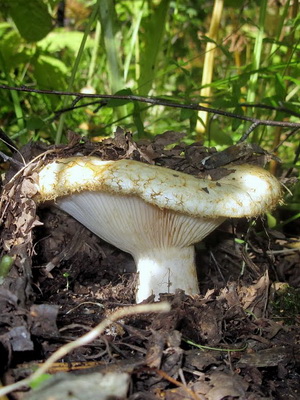

And how to plant mushrooms in the garden real breasts (Lactarius resimus) and niggles (Lactarius necator)? It is better to do this with a birch. Real chest (Lactarius resimus) Is really the king of mushrooms to taste. This is a white, then slightly creamy mushroom with a bushy hairy edge of the cap. The pulp is dense, brittle, with a pleasant smell. White caustic juice turns yellow in the air.
Real cold-salted mushrooms have an exceptionally pleasant texture and taste. Salty breasts covered with jelly-like juice are taken out of the barrel with smacking. Not much can compare with them as a snack! In the foothills of the Urals in Bashkiria during the period of mass gathering of bucks, a bucket of breasts is cheaper than a bucket of potatoes. But, unfortunately, in the European part of Russia, real breasts are rarely found in small quantities.
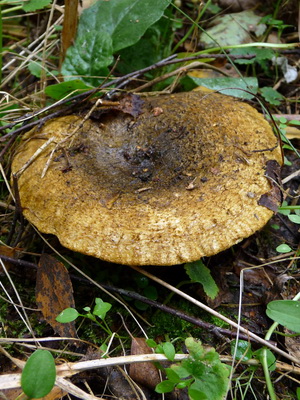
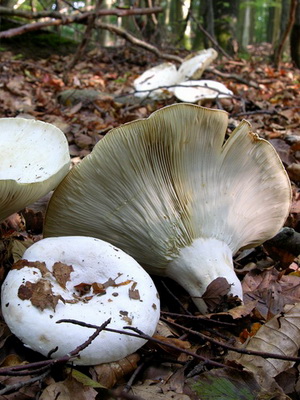
But in the garden areas of the Moscow region, where there are birch trees and fairly moist soil, sometimes appears black lump (Lactarius necator) In wooded estates, a large lactarius often grows - violinist (Lactarius vellereus) The violinist also has a pungent and bitter taste. This bitterness tastes unpleasant even after prolonged soaking.
How to grow other mushrooms in the infield
And how to propagate mushrooms of other varieties on the site? The transplantation of birch trees and young oaks with white fungus mycorrhiza can be done repeatedly, but the result was the appearance of other mycorrhizal fungi under birch trees. Before growing porcini mushrooms in a summer cottage, it is better to dig birches and oaks with a lump of earth and a boletus on a coma. So there is no doubt about the presence of mycorrhiza ceps on the roots.
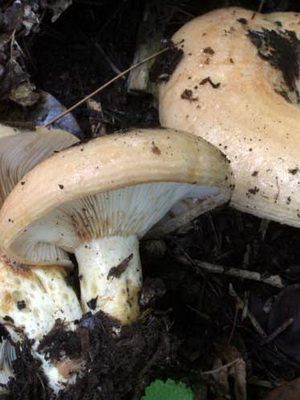
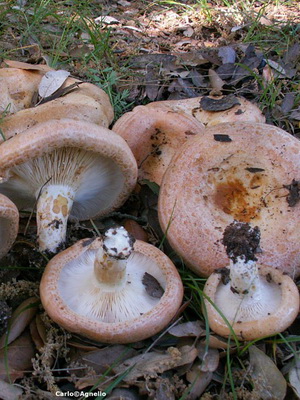
Under the two birches this year edible milkmen, similar to milk mushrooms, have grown. it zone milk (Lactarius zonarius) It has a burning, but pleasant taste. A little milky juice. This beautiful mushroom with dense pulp is suitable for salting in a cold way.
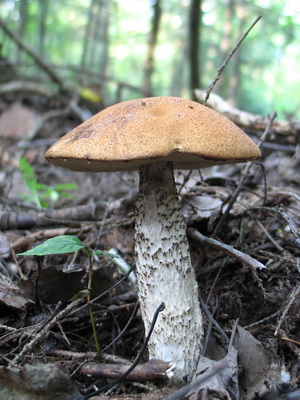
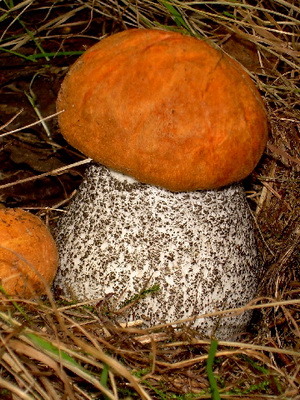
Boletus spruce (Leccinum pinecium) was brought directly to the roots of the Christmas tree from the banks of the Western Dvina. Herringbone has taken root. There were no mushrooms yet. Grows in the garden and several aspens with mycorrhiza red boletus (Leccinum aurantiacum) No fruiting yet either.
The successful experience of growing a ring on a bed of wood chips has fueled interest in other forest mushrooms that grow on forest litter.
The most interesting of them:
- delicious and popular mushroom purple row (Lepista nuda), grows in autumn on a litter in coniferous forests;
- very similar to her dirty row (Lepista sordida);
- oyster mushroom (Pleurotus eryngii), white, it is called "boletus" for the fact that in consistency and shape it resembles a porcini mushroom;
- straw mushroom (Volvariella volvacea), grows well on straw at high temperature.
Sometimes they grow on the litter and mushrooms, which are considered humic.
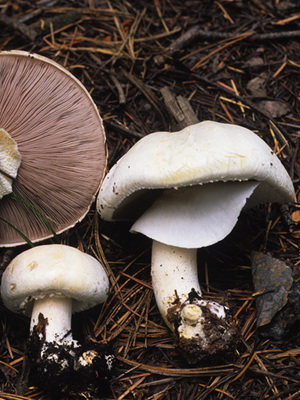
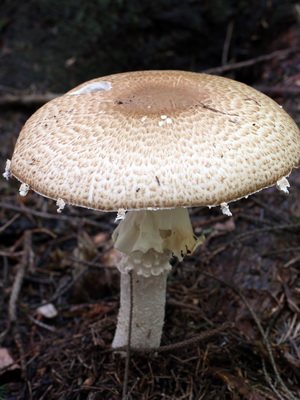
For example, champignon coppice (Agaricus silvicola) and champignon august (Agaricus augustus), which grew in 2013 on a mulch from willow chips by itself. In 2013 and 2014, after the ringworm ceased to bear fruit in September, it grew on the same bed willow (Pluteus salicinus) Boiled mushroom has a typically mushroom taste. Roasted willow whip is also very good!

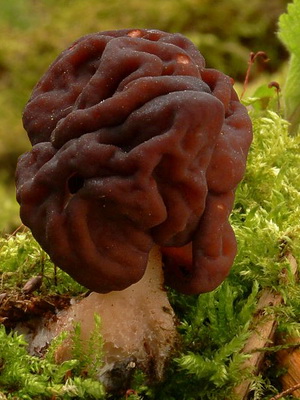
And how to breed mushrooms at the summer cottage as big motley umbrella (Macrolepiota procera) and ordinary line (Gyromitra esculenta)? They can be propagated by the technology of growing litter mushrooms.
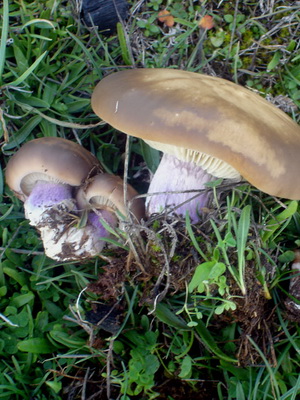
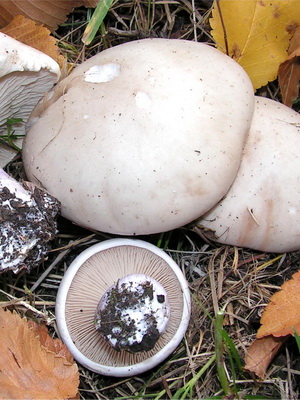
But the most coveted and most delicious humus mushroom is lilac-leg row (Lepista personata) It is possible that in the future some wood mushrooms will be able to grow on a bed of wood chips.
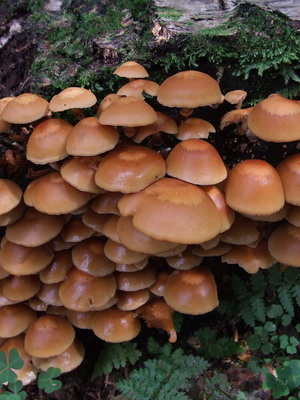
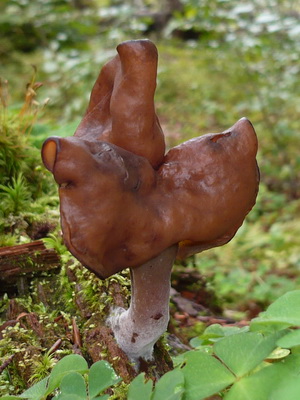
it summer honey agaric (Kuenheromyces mutabilus) and autumn stitch (Gyromitra infula).
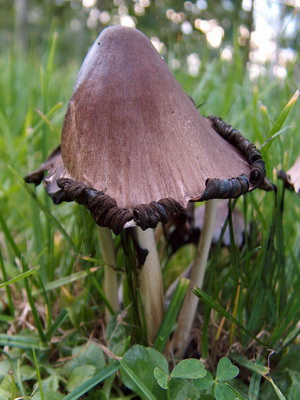
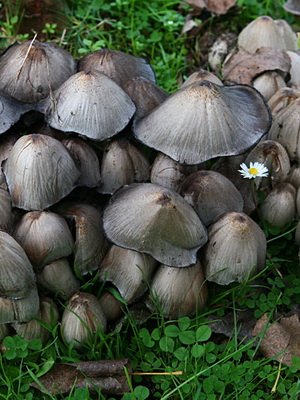
Also interesting ink mushroom (Coprinus atramentarius), the one that makes alcohol poisonous by blocking enzymes that decompose alcohol.
Now you know how to grow forest mushrooms on the site, which means it's time to act!
